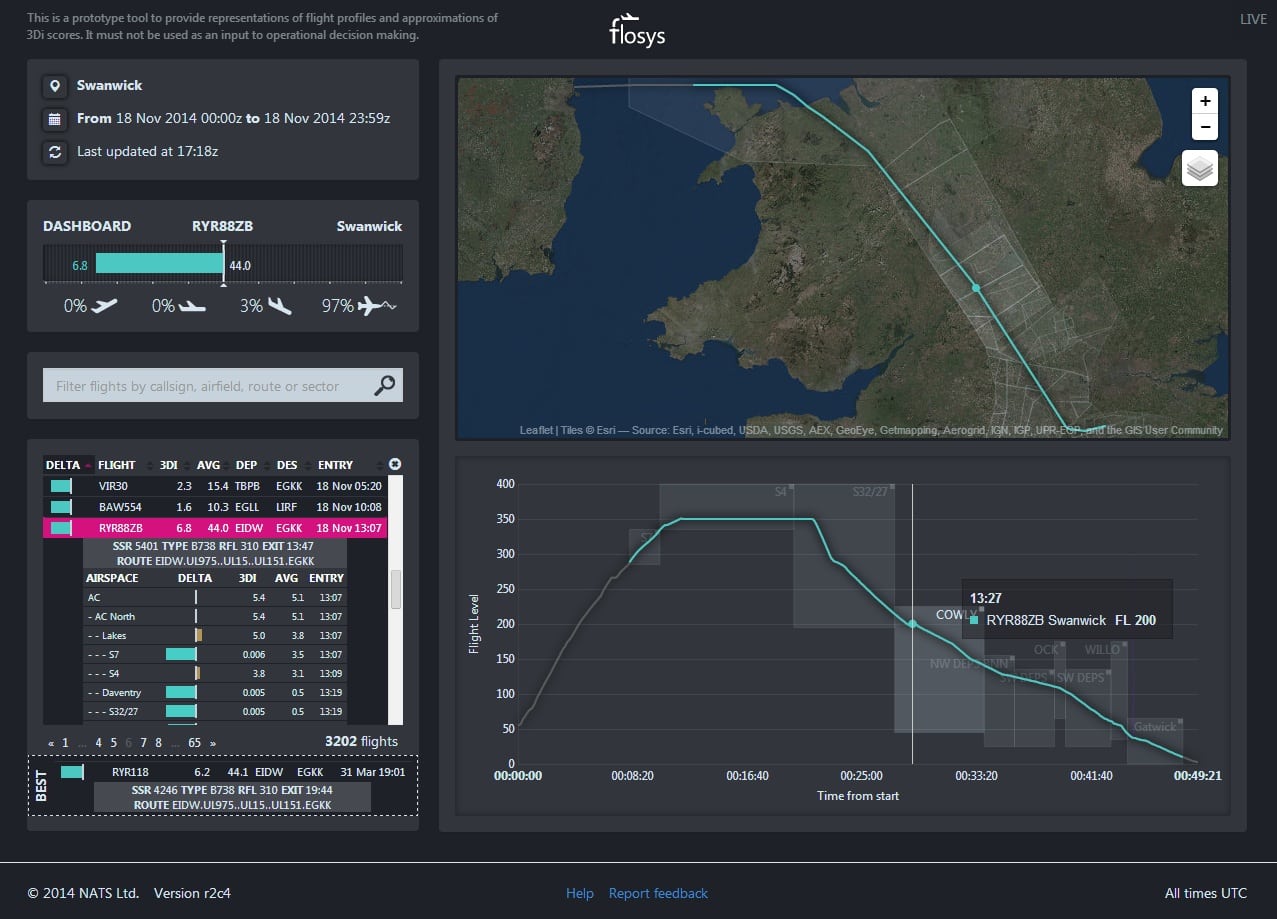 |
| Flosys, a tool that analyzes the environmental efficiency of flights, trailed by NATS to improve C02 impact. Photo: NATS |
[Avionics Today 01-20-2015] NATS efforts to reduce the environmental impact of aviation are paying off as U.K. operators are saving 1 million tons of aviation-related CO2 each year, according to figures released by NATS. The reduction equates to more than $174 million in enabled fuel savings for airlines and an average 4.3 percent cut in CO2 per flight
These improvements are the result of changes to U.K. airspace that allow for more direct routes and improved vertical profiles; the use of more efficient procedures, such as continuous instead of stepped climbs and descents; and the introduction of new Air Traffic Control (ATC) technologies.
The estimated 300 changes to U.K. airspace over the past six years have been developed and implemented in an effort to find better and more efficient routes for airlines. This includes the more flexible use of military airspace when not in use, and the introduction of Gander Automated Air Traffic System Plus (GAATS+), the tools that allow controllers to offer airlines the most efficient altitudes across the North Atlantic. These two programs have enabled savings of nearly 140,000 tons of CO2. Providing access to more environmental data has also played a role, according to NATS.
“Getting to this point has been very challenging. It’s taken significant effort, some innovative thinking and collaborative working with our customers and neighboring air traffic service providers. To have exceeded 4 percent is now the perfect springboard to achieving our longer term ambition of a 10 percent reduction,” said NATS Head of Environment and Community Affairs, Ian Jopson, of NATS goal to reduce CO2 by 10 percent by the year 2020.